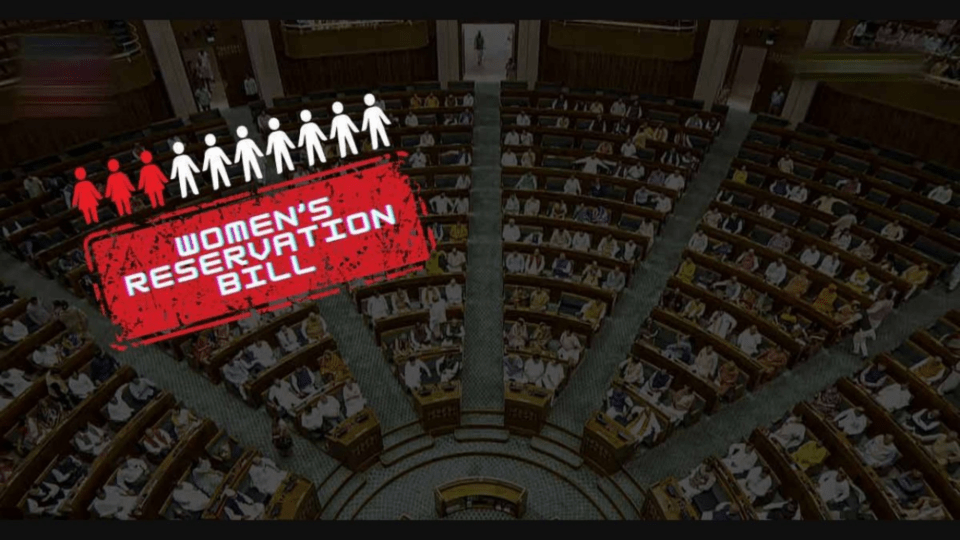The Women’s Reservation Bill, a landmark piece of legislation aimed at bridging the gender gap in Indian politics, has finally achieved a significant breakthrough. This bill seeks to reserve one-third of seats in state legislative assemblies and the Parliament for women, with additional quotas for Scheduled Castes (SCs), Scheduled Tribes (STs), and Anglo-Indians within the 33% reservation. This article takes a deep dive into the fascinating history of the bill, highlighting its ups and downs, and the recent development in the Lok Sabha.
Also Read: Parliament’s Special Session: Eight Crucial Bills
A Look Back in Time
The idea of reserving seats for women in elected bodies was first proposed by former Prime Minister Rajiv Gandhi in May 1989. His Constitution Amendment Bill aimed to secure a one-third reservation for women in both rural and urban local bodies, a move that was successfully passed in the Lok Sabha. However, it faced resistance in the Rajya Sabha later that year and failed to gain approval.
In 1992 and 1993, Prime Minister P.V. Narasimha Rao reintroduced similar bills, which reserved one-third of all seats and chairperson posts for women in rural and urban local bodies. These bills successfully navigated both houses, becoming law. This groundbreaking development led to the election of nearly 15 lakh women representatives in panchayats and nagarpalikas across the country.
The Struggle for Parliamentary Representation
The path to achieving women’s representation in Parliament was marked by numerous obstacles. In September 1996, the Deve Gowda-led United Front government presented the 81st Constitution Amendment Bill in the Lok Sabha, intending to reserve seats for women in Parliament. However, the bill encountered opposition and was referred to a Joint Parliamentary Committee chaired by Geeta Mukherjee. Despite the committee presenting its report in December 1996, the bill ultimately lapsed due to the dissolution of the Lok Sabha.
In 1998, the Atal Bihari Vajpayee-led NDA government attempted to pass the Women’s Reservation Bill in the 12th Lok Sabha, but it faced resistance and eventually lapsed. Subsequent efforts in 1999, 2002, and 2003 under the Vajpayee government met similar fates.
A Turning Point
A pivotal moment arrived during the Manmohan Singh-led UPA government-1 in 2004 when the Women’s Reservation Bill was included in the Common Minimum Programme. Finally, on May 6, 2008, the bill was tabled in the Rajya Sabha, preventing it from lapsing again. This version of the bill incorporated five of the seven recommendations made by the 1996 Geeta Mukherjee Committee. After passing through the standing committee and receiving Union Cabinet approval in February 2010, the bill garnered an overwhelming vote of 186-1 in the Rajya Sabha on March 9, 2010.
Lok Sabha’s Recent Milestone
Despite its successful passage in the Rajya Sabha, the Women’s Reservation Bill had never been considered in the Lok Sabha. Eventually, he lapsed in 2014 with the dissolution of the Lok Sabha. However, on September 20, 2023, the Lok Sabha achieved a historic moment by passing the Constitution (One Hundred and Twenty-Eighth) Bill 2023 with an impressive consensus. Out of 456 members present, only two members opposed the bill.
The bill proposes a 33% reservation for women in the Lok Sabha and state assemblies, including the National Capital Territory of Delhi, with similar reservations within the SC and ST seats. It also outlines a 15-year duration for this reservation, with seats for women rotating after each delimitation exercise.
Challenges on the Horizon
While the recent passage in the Lok Sabha is a significant milestone, the bill’s implementation faces challenges. According to the provision, it will come into effect after a delimitation exercise following the first census taken after the commencement of the Constitution (128th Amendment) Act 2023. However, uncertainties linger regarding the completion of the census, which was due in 2021, and the government’s statement that the next delimitation exercise may occur after the 2026 census. Consequently, implementation may not occur before 2029.
The Women’s Reservation Bill has embarked on a long and tumultuous journey through India’s political landscape. Its recent success in the Lok Sabha signifies substantial progress toward achieving gender equality in Indian politics. While the bill awaits implementation, it stands as a testament to the enduring commitment to empowering women in the country’s democratic institutions.
As an independent media platform, we do not take advertisements from governments and corporate houses. It is you, our readers, who have supported us on our journey to do honest and unbiased journalism. Please contribute, so that we can continue to do the same in future.

